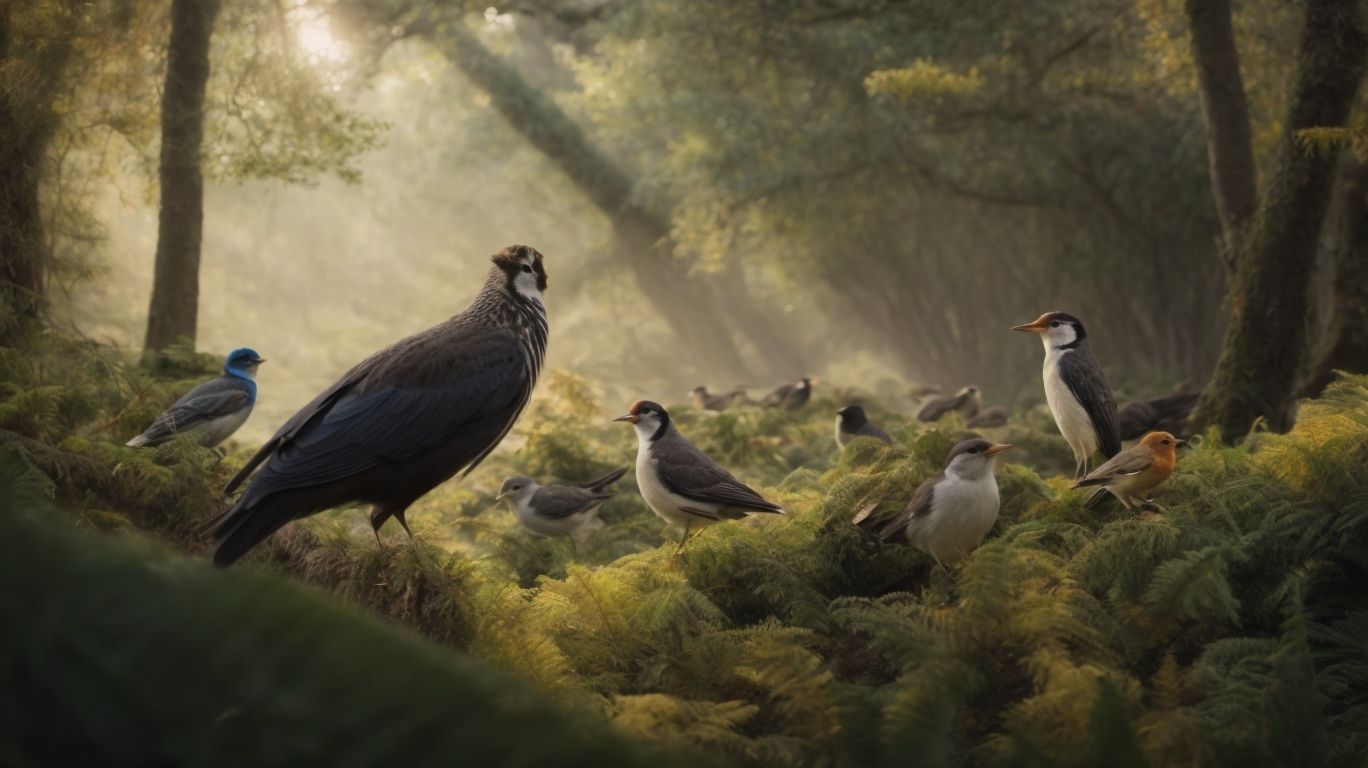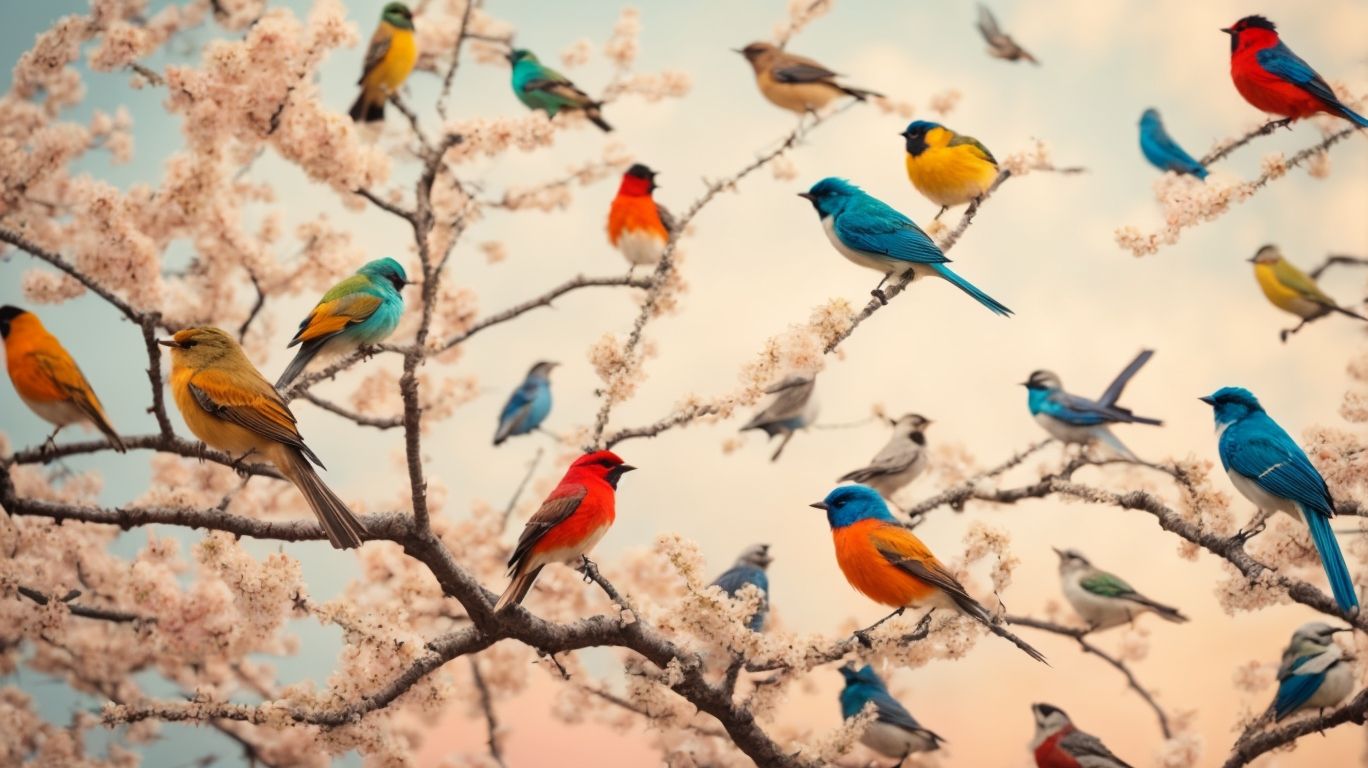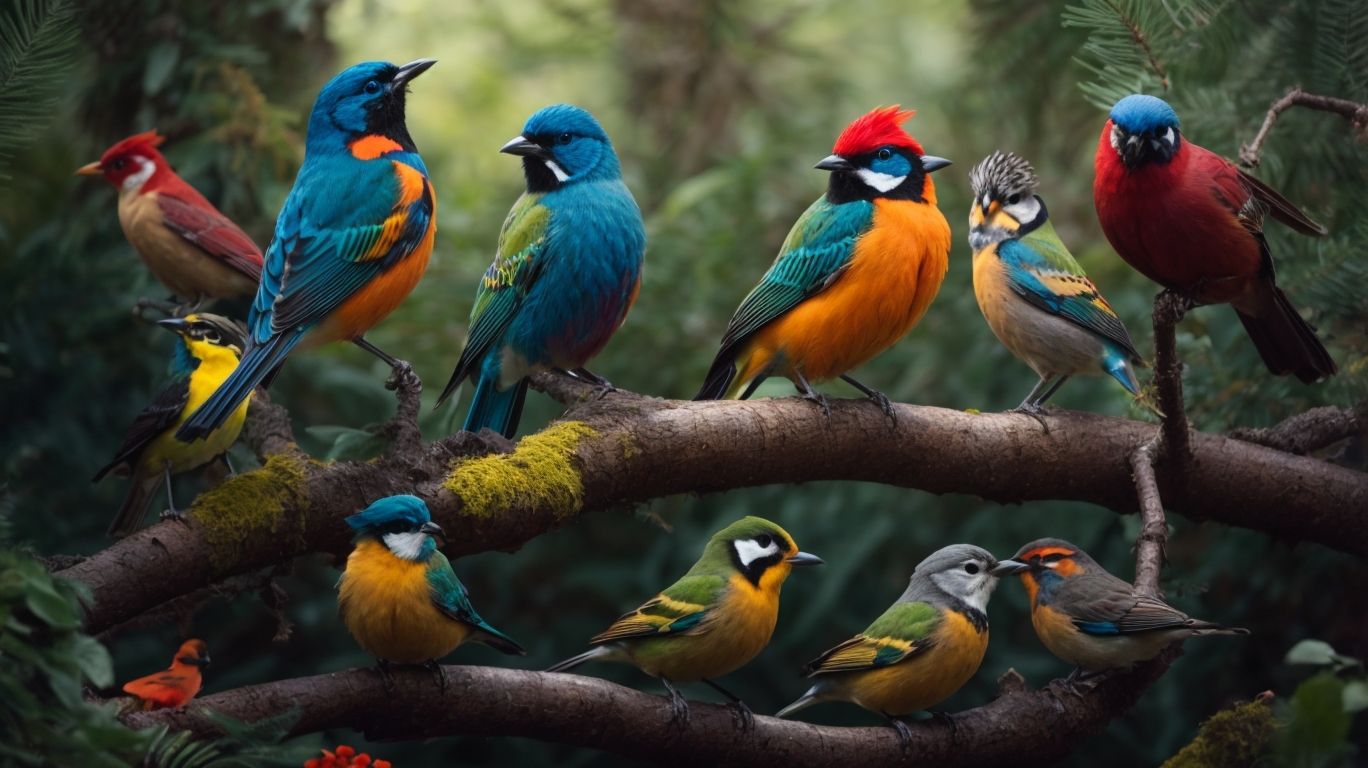
Birding Trails of the Northeast: A Journey Through Avian Habitats
Are you a bird enthusiast looking to explore new avian habitats? Look no further than the Northeast region of the United States, home to a diverse range of birding trails waiting to be discovered.
From the rugged beauty of Acadia National Park in Maine to the tranquil shores of Cape May in New Jersey, these top birding spots offer the chance to spot a variety of bird species in their natural habitats.
Join us on a journey through the Birding Trails of the Northeast and discover the beauty of seabirds, songbirds, raptors, and more along the way.
What Are Birding Trails?
Birding trails are designated paths or routes that wind through various avian habitats, offering birdwatching enthusiasts and wildlife lovers a chance to immerse themselves in the beauty of nature.
These trails are carefully crafted to showcase the rich biodiversity of bird species that inhabit different ecosystems, from lush forests to open grasslands and wetlands. By traversing these trails, individuals can witness a myriad of bird behavior, from graceful soaring to intricate nest-building. Birding trails often provide educational opportunities, with interpretive signs and guides offering insights into the avian world and conservation efforts. For many, following these trails is not just a hobby but a soul-enriching journey that fosters a deeper connection to the natural world.”
Why Visit the Northeast for Birding?
The Northeast region beckons birding enthusiasts with its rich tapestry of avian habitats, seasonal bird migrations, conservation efforts, unique avian species, and breathtaking scenic views.
Known for its varied landscapes ranging from dense forests and wetlands to mountainous terrains and coastal areas, the Northeast provides a diverse ecosystem for birds to thrive.
Birdwatchers can witness the annual migrations of species like warblers, thrushes, and waterfowl as they pass through the region. Conservation initiatives in the area aim to protect important bird habitats and ensure the survival of rare and endangered species, adding to the allure of exploring the Northeast for birding excursions.
What Are the Top Birding Trails in the Northeast?
Exploring the Northeast unveils a treasure trove of top birding trails that cater to birdwatchers seeking unforgettable birding experiences in prime locations known for their avian diversity and scenic beauty.
- From the expansive Acadia National Park in Maine to the tranquil wetlands of Cape May in New Jersey, the Northeast boasts a variety of renowned birding hotspots that attract enthusiasts from far and wide.
- Birders flock to locations like the Edwin B. Forsythe National Wildlife Refuge in New Jersey or the Down East Sunrise Trail in Maine for unique avian encounters and opportunities for nature photography.
- Whether you’re exploring the vibrant forests of Vermont or the coastal marshes of Delaware, the Northeast offers a rich tapestry of birding locations waiting to be discovered.
Acadia National Park, Maine
Acadia National Park in Maine is a haven for birdwatchers, encompassing diverse forests, wetlands, and bird habitats that host a multitude of bird species, making it a must-visit for avian enthusiasts.
The coastal cliffs and rocky shores of Acadia National Park provide nesting grounds for seabirds such as Atlantic Puffins and Razorbills, offering visitors a chance to witness these fascinating creatures up close.
The park’s woodlands are home to warblers, chickadees, and woodpeckers, adding to the rich tapestry of bird species that can be spotted throughout the park.
Birdwatchers can also explore the park’s freshwater ponds and marshes, where herons, ducks, and other waterfowl frolic in their natural habitat, showcasing the park’s commitment to preserving diverse ecosystems for both avian residents and visitors to enjoy.
Cape May, New Jersey
Cape May in New Jersey stands out as a premier destination for birding events, excursions, and valuable tips that cater to birding enthusiasts seeking memorable experiences and expert guidance.
Birdwatchers in Cape May can take advantage of a variety of resources like guided tours led by experienced naturalists who offer insights into the diverse bird species found in the area. The region’s strategic location along the East Coast provides a crucial stopover point for migrating birds, allowing enthusiasts to witness stunning displays of bird migration. Cape May hosts numerous workshops and festivals throughout the year, including the renowned World Series of Birding, where participants can engage in friendly competition while adding to their birding knowledge and skills.
Mount Desert Island, Maine
Mount Desert Island in Maine beckons birding enthusiasts with its expert birding guides, comprehensive birding maps, and abundant resources that aid in navigating the island’s diverse avian landscapes.
These resources play a crucial role in supporting birdwatchers as they explore the island’s varied bird habitats, providing valuable insights into the unique bird species that can be spotted across Mount Desert Island.
Whether you are a novice birdwatcher or a seasoned enthusiast, the availability of birding guides and maps ensures that you can easily identify key birding locations and maximize your chances of encountering a wide range of bird species during your visit.
By tapping into these resources, birdwatchers can enhance their overall birding experience and gain a deeper appreciation for the rich avian diversity found on the island.
Monomoy National Wildlife Refuge, Massachusetts
Monomoy National Wildlife Refuge in Massachusetts fosters a vibrant birding community by offering educational programs, workshops, and engaging activities that enrich the birding experience and promote avian conservation.
Birdwatchers at Monomoy National Wildlife Refuge benefit from a range of informative workshops on bird identification, behavior, and habitat conservation. These workshops are designed to cater to enthusiasts of all experience levels, from beginners to seasoned birders, creating a welcoming environment for learning and sharing knowledge. The community-driven events, such as birding walks and photography contests, not only enhance birdwatching skills but also instill a deeper appreciation for the natural world and the importance of protecting our feathered friends.
Niagara Falls State Park, New York
Niagara Falls State Park in New York hosts captivating birding festivals, competitions, and exciting challenges that captivate birding enthusiasts and offer unique opportunities for birdwatching amidst stunning natural surroundings.
The birding events at the park not only provide a chance to spot a wide variety of bird species but also create a sense of friendly competition among participants. Birdwatchers from near and far gather to test their skills and knowledge, exchanging tips and stories along the way. The shared passion for birds fosters a sense of camaraderie, as everyone comes together to celebrate the beauty of nature and the thrill of birding excursions.
Plum Island, Massachusetts
Plum Island in Massachusetts beckons with exciting birding trips, adventures, and vacation experiences that cater to birding enthusiasts looking for memorable encounters with diverse bird species in a picturesque coastal setting.
The island’s unique ecosystem provides a haven for over 300 species of birds throughout the year, offering birdwatchers a chance to spot rare and migratory birds in their natural habitats.
With several well-maintained trails and observation points, visitors can immerse themselves in the beauty of wetlands, marshes, and sandy beaches while enjoying close-up views of ospreys, plovers, and other coastal avian inhabitants.
Whether you are a novice birder or a seasoned expert, Plum Island promises an enriching experience filled with birding delights and breathtaking scenery.
Brigantine National Wildlife Refuge, New Jersey
Brigantine National Wildlife Refuge in New Jersey offers birding accommodations, restaurants, and attractions that cater to birding enthusiasts seeking comfortable stays, dining options, and local attractions amidst the refuge’s natural beauty.
The accommodations at Brigantine National Wildlife Refuge provide birdwatchers with a cozy retreat after a day of exploring the diverse habitats. Birding enthusiasts can choose from a range of lodging options, from quaint cabins to luxurious eco-friendly lodges that blend seamlessly with the surrounding environment.
The dining options at the refuge include farm-to-table restaurants that serve up fresh, locally sourced cuisine to satisfy both the palate and the soul.
As for attractions, visitors can embark on guided birdwatching tours led by knowledgeable naturalists, explore nature trails teeming with wildlife, or simply relax and take in the serene beauty of the refuge.
Presque Isle State Park, Pennsylvania
Presque Isle State Park in Pennsylvania is a haven for birding enthusiasts, offering access to birding shops, gear stores, and quality equipment that enhance the birding experience and support wildlife observation endeavors.
These dedicated shops cater to every need of birdwatchers, stocking a wide range of binoculars, spotting scopes, field guides, bird feeders, and attire suitable for comfortable and stylish outdoor exploration.
Visitors to Presque Isle State Park can easily find specialized equipment tailored for birding expeditions, ensuring that they have all the necessary tools to spot and identify various bird species in their natural habitat.
Whether beginners or seasoned birders, everyone can find the right gear to make the most of their birdwatching adventures and capture stunning moments through their lenses.
Block Island, Rhode Island
Block Island in Rhode Island offers birding enthusiasts access to top-quality birding binoculars, cameras, and apparel, enriching the birding experience and enabling wildlife observation in stunning coastal surroundings.
With a range of equipment specifically designed for birdwatching available on the island, enthusiasts can find everything they need to enhance their nature photography opportunities. From lightweight and powerful binoculars that allow for detailed bird identification to high-resolution cameras perfect for capturing those rare moments with precision, Block Island truly caters to the needs of birding enthusiasts.
The selection of comfortable and functional apparel ensures that visitors can explore the island’s diverse bird habitats in style and comfort, making it a true birding paradise.
Moosehorn National Wildlife Refuge, Maine
Moosehorn National Wildlife Refuge in Maine offers birding souvenirs, valuable resources, and comprehensive checklists that aid birding enthusiasts in commemorating their experiences, accessing information, and planning future birding adventures.
The refuge’s selection of souvenirs includes beautiful bird-themed merchandise such as mugs, t-shirts, and field guides to help birdwatchers cherish their memorable sightings.
Birding resources like species identification guides, binoculars, and bird call recordings are available to enhance visitors’ knowledge and observation skills.
The refuge’s educational materials, such as bird behavior charts and migration maps, assist enthusiasts in understanding avian life cycles and migration patterns.
With these tools and resources, guests can fully immerse themselves in the fascinating world of birdwatching at Moosehorn National Wildlife Refuge.
What Types of Birds Can Be Found in These Trails?
Birding trails in the Northeast offer a diverse array of bird species, including majestic seabirds, melodious songbirds, soaring raptors, graceful waterfowl, elegant shorebirds, elusive woodpeckers, vibrant hummingbirds, and mysterious owls.
Seabirds such as the Atlantic Puffin captivate with their vibrant beaks and expert diving skills, while songbirds like the American Goldfinch fill the air with their cheerful melodies. Raptors like the Red-tailed Hawk command attention with their keen eyesight and agile flight. Waterfowl such as the Mallard exhibit striking plumage and graceful swimming. Shorebirds like the Sanderling can be spotted quick on their feet along sandy shores. Woodpeckers, such as the Downy Woodpecker, impress with their ability to drum on tree trunks. Hummingbirds, such as the Ruby-throated Hummingbird, amaze with their iridescent colors and hovering flights. Owls like the Great Horned Owl evoke intrigue with their nocturnal habits and silent flight.
Seabirds
Seabirds are a fascinating group of bird species that thrive along coastal regions, exhibiting diverse migratory patterns and diverse adaptations for life in the oceanic environments.
These remarkable creatures have evolved a unique set of characteristics, such as waterproof feathers and specialized gland systems that allow them to drink saltwater. Their coastal habitats provide easy access to abundant food sources like fish and squid, sustaining their energy for long migrations across vast ocean expanses.
Seabirds often follow specific migration routes that take them from breeding grounds to foraging areas, with some species traveling thousands of miles each year. Their ability to navigate using celestial cues and geomagnetic fields is truly remarkable, ensuring their survival in the ever-changing marine ecosystems.
Songbirds
Songbirds enchant birding enthusiasts with their melodious calls and vibrant plumage, often found flitting through forests, gardens, and diverse habitats, adding musical charm to the avian landscape.
Their diverse vocalizations range from the sweet trills of the American Robin to the haunting melodies of the Wood Thrush. These enchanting creatures not only fill the air with their songs but also play vital roles in their ecosystems, dispersing seeds and controlling insect populations.
In forests, warblers flit among the leaves, while in gardens, finches add splashes of color to the landscape. Songbirds thrive in a variety of habitats, with some preferring the dense cover of trees, while others are drawn to open meadows or marshes.
Raptors
Raptors, known for their predatory prowess and aerial grace, play a crucial role in ecosystems, with conservation efforts focused on protecting these majestic birds during their migrations and in their habitats.
Their presence helps regulate prey populations and maintain the ecological balance within their habitats. Many raptor species are facing threats such as habitat loss, illegal hunting, and pesticide poisoning, underscoring the importance of conservation initiatives.
Through efforts like habitat preservation, captive breeding programs, and anti-poaching measures, organizations strive to safeguard raptor populations. Understanding the migratory patterns of raptors is essential for effective conservation planning, as these birds traverse vast distances and rely on stopover sites for rest and refueling during their journeys.
Waterfowl
Waterfowl, including ducks, geese, and swans, grace wetlands and water bodies with their elegant presence, engaging in seasonal migrations that captivate birdwatchers with their beauty and behaviors.
These fascinating birds have developed remarkable strategies for travel, often flying thousands of miles between breeding and wintering grounds. For instance, some species of ducks are known for forming V-shaped formations during migration, each bird taking turns to lead the pack and conserve energy. Geese, on the other hand, are recognized for their loud honking calls that echo through the skies. Swans stand out with their graceful long necks and distinctive trumpeting calls, adding to the allure of wetland environments.
Shorebirds
Shorebirds, such as sandpipers and plovers, grace the shoreline with their presence, foraging along coastal areas and sandy beaches, showcasing their agile movements and unique feeding behaviors.
They are often seen probing the wet sand with their slender bills, searching for small invertebrates and crustaceans to consume. Their distinctive physical features, including long legs ideal for wading in shallow waters and intricate plumage patterns for camouflage, allow them to navigate the dynamic coastal environments with ease.
With their diverse sizes and shapes, from the dainty semipalmated sandpipers to the robust willets, shorebirds play crucial roles in maintaining the balance of coastal ecosystems, contributing to the intricate web of marine life along shorelines.
Woodpeckers
Woodpeckers, with their rhythmic drumming on tree trunks and distinctive plumage, are iconic forest dwellers that exhibit specialized adaptations for foraging insects and nesting in tree cavities.
Their drumming behavior serves multiple purposes – from communicating with mates to establishing territory boundaries. These skilled climbers have strong feet with sharp claws for gripping tree bark, allowing them to move vertically with ease. With their chisel-like bills and long tongues equipped with barbs for extracting insects from crevices, woodpeckers have perfected the art of foraging. Their unique adaptations, such as a reinforced skull to absorb impact while pecking, aid in their relentless search for food and in excavating nest holes deep within trees.
Hummingbirds
Hummingbirds, with their iridescent plumage and nectar-sipping lifestyle, captivate birding enthusiasts with their aerial acrobatics, hovering abilities, and vibrant displays in gardens and natural settings.
These tiny marvels of nature belong to the Trochilidae family, known for their specialized long, slender bills designed for sipping nectar from tubular flowers like trumpet vine, salvia, and bee balm. Their unique flight capabilities, such as hovering in mid-air and flying backward, add to their charm.
Hummingbirds come in various hues, from the dazzling red of the Ruby-throated Hummingbird to the brilliant blues of the Azure-crowned Hummingbird, making them a painter’s palette of natural beauty.
Owls
Owls, with their nocturnal habits, silent flight, and symbolic significance, embody an aura of mystery and wisdom, captivating birding enthusiasts with their elusive nature and enigmatic presence in forests and nighttime landscapes.
These fascinating creatures are known for their specialized adaptations that allow them to thrive during the darkness of the night. From their keen eyesight and acute hearing to their stealthy maneuvers and ability to pinpoint prey in the cover of darkness, owls have evolved remarkable skills for nighttime hunting.
Different owl species showcase unique characteristics, such as the barn owl’s heart-shaped facial disc for enhanced sound localization and the snowy owl’s pure white plumage for camouflage in snowy environments.
What Are Some Tips for Birding on These Trails?
When embarking on birding adventures along these trails, it’s essential to be well-prepared with the right birding gear, utilize birding tips for optimal sightings, and follow a comprehensive birding checklist to enhance the overall birdwatching experience.
Having appropriate birding gear such as binoculars, a field guide, and sturdy footwear can significantly improve your ability to spot and identify different bird species.
Effective birding techniques, like moving quietly and being patient, are key to observing birds in their natural habitats.
By following a detailed birding checklist that includes notes on habitat, behavior, and distinctive features of birds, you can learn more about the avian species you encounter, making your birdwatching adventures more educational and rewarding.




No Comments